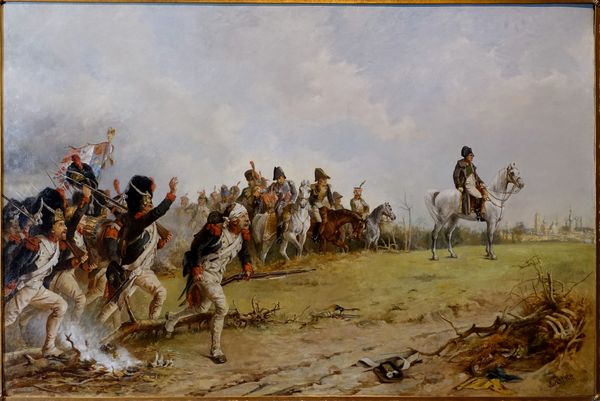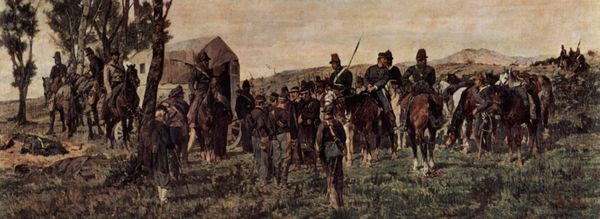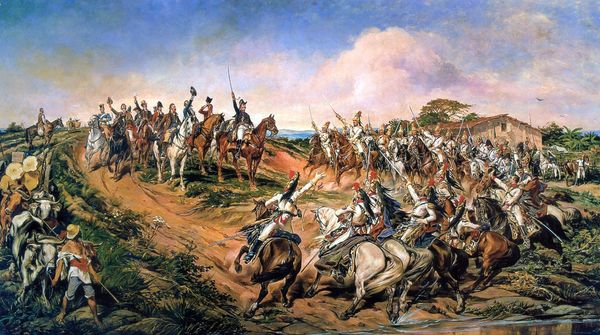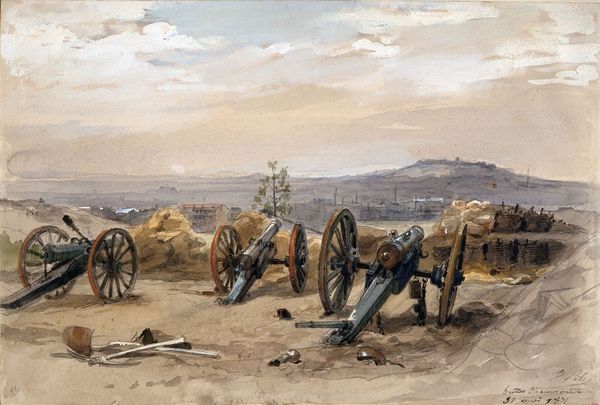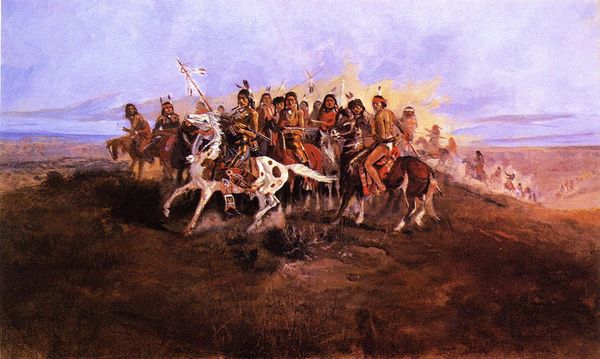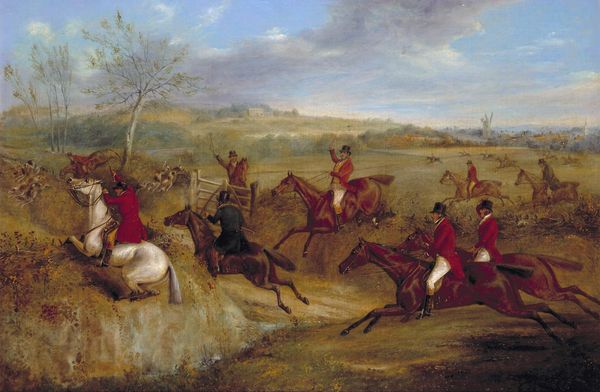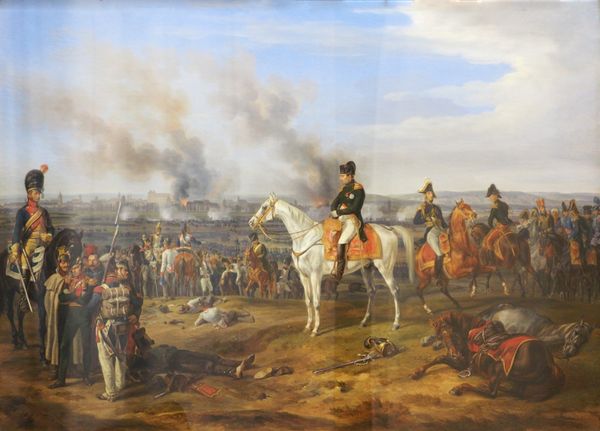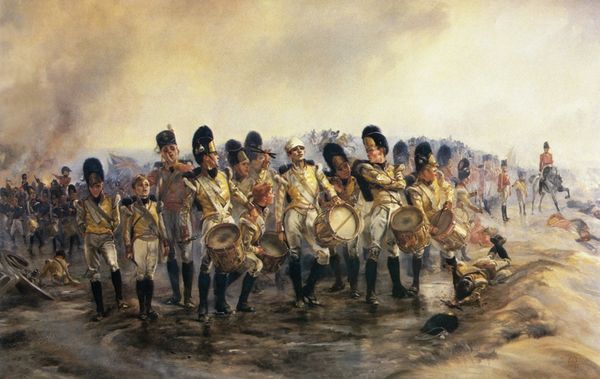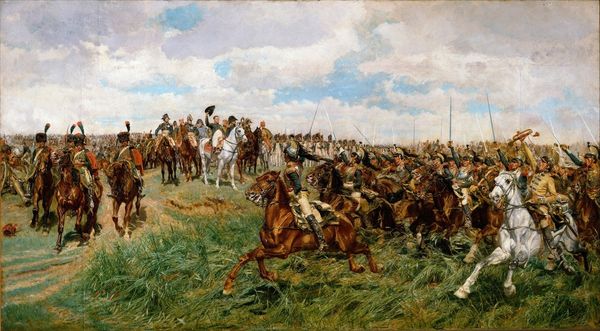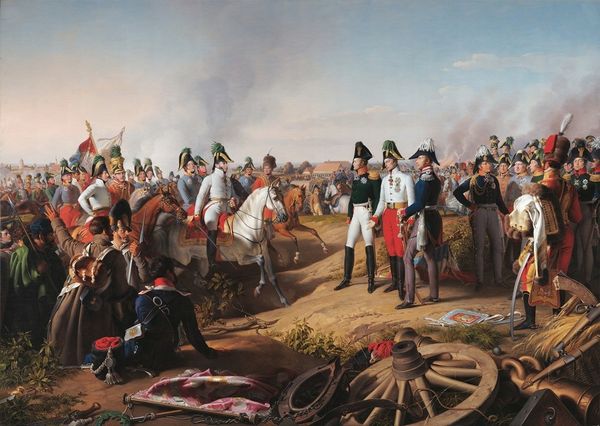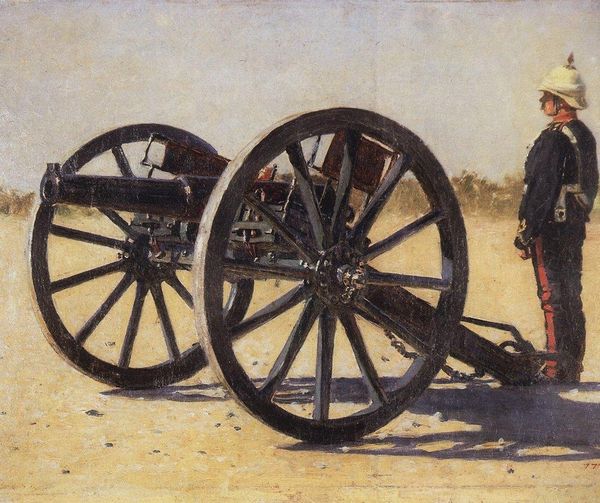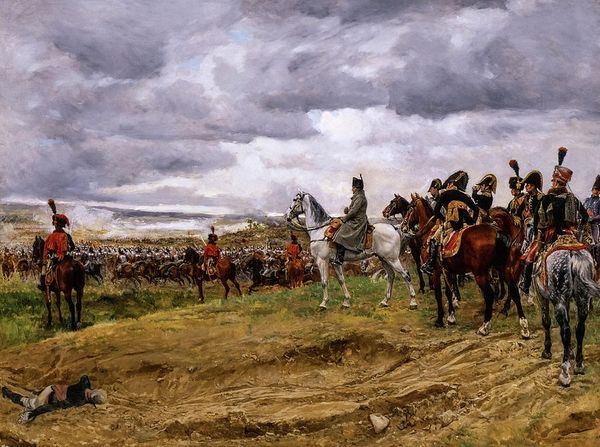
Copyright: Public domain
Editor: Here we have Tom Roberts' "A Battery Field Artillery, New South Wales" from 1896, made with oil paint. There is a very palpable sense of movement, and it's compelling how the artist captured a scene that blends the artillery foreground with what appears to be nature’s immensity behind it. What's your take on it? Curator: I'm immediately drawn to the conditions of labor depicted. Consider the year it was created: 1896. How were these materials sourced, and under what social conditions were these cannons manufactured and used? Look at the implied action of these men. How does Roberts use brushstrokes and composition to communicate that energy? Does the materiality of the scene—earth, metal, sky—carry symbolic weight, and if so, what kind? Editor: That's an interesting way to frame it! It had not occurred to me to think about labor in the process of both art-making *and* warfare itself when looking at the image. The context helps. What about the "Australian Impressionism" label associated with the painting style? Curator: I find "Australian Impressionism" a somewhat limiting term. If we delve deeper, we might challenge the notion that art movements develop in isolation. Were the production and consumption of Impressionist art in Australia tied to specific social classes or colonial structures? It's a good idea to research how the Impressionistic techniques serve the depiction of labor and the glorification of a colonial military force. Editor: So, thinking beyond the label gives a deeper and probably more realistic insight to this piece. The process of creation really puts everything into a perspective, doesn’t it? Curator: Precisely! By interrogating the materials, labour, and the social context, we can arrive at a much richer, even subversive understanding of Roberts' work.
Comments
No comments
Be the first to comment and join the conversation on the ultimate creative platform.
